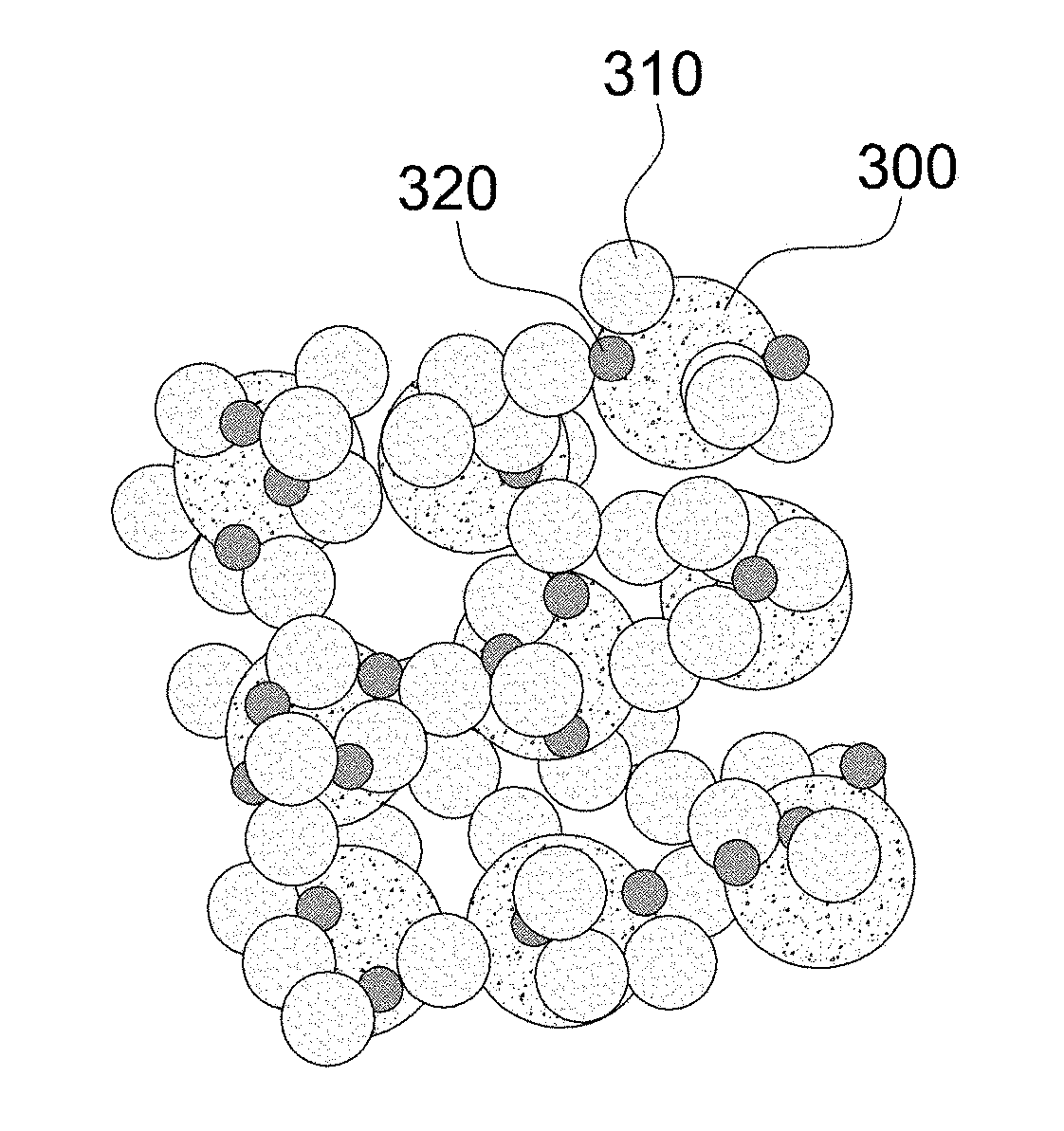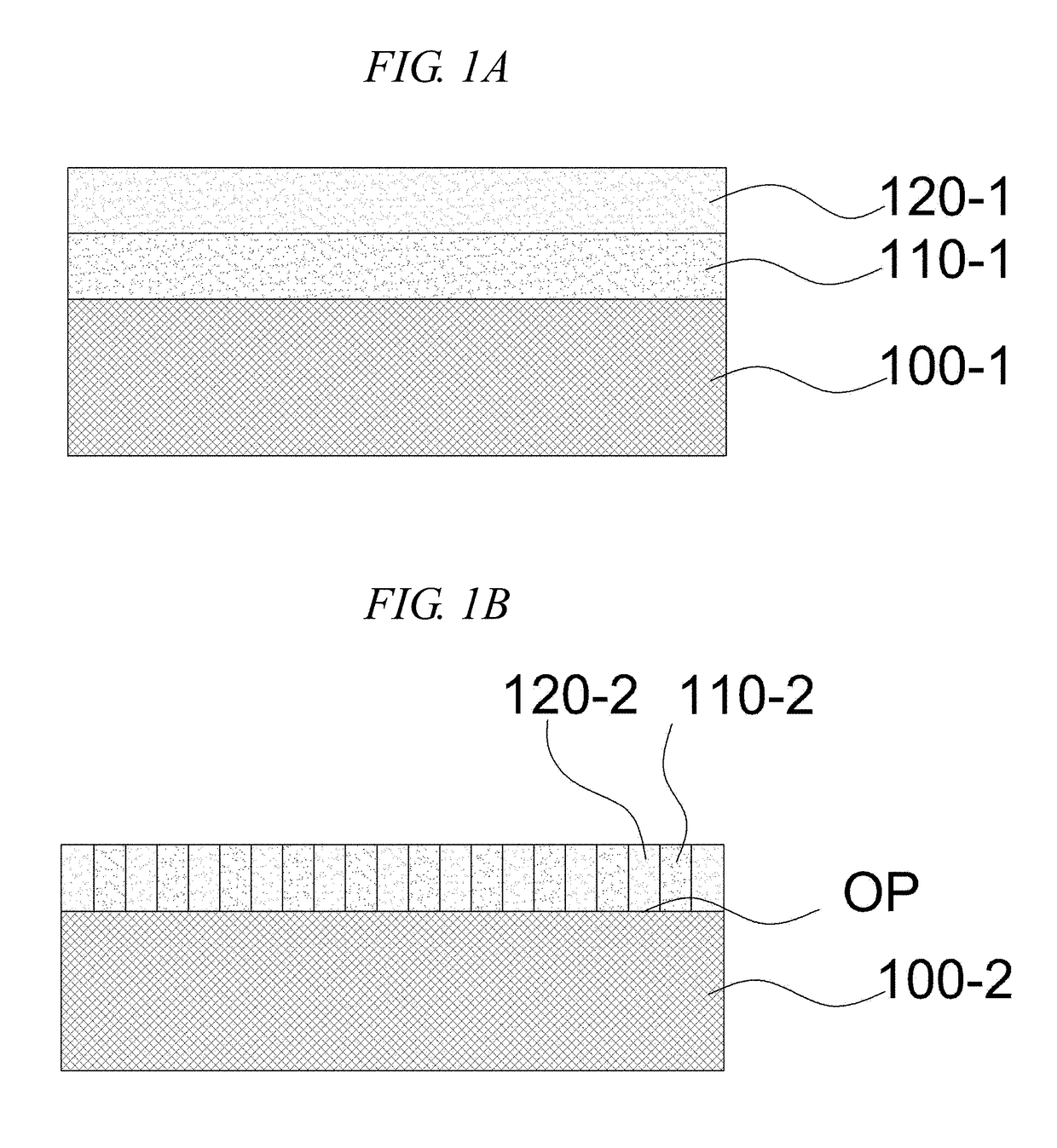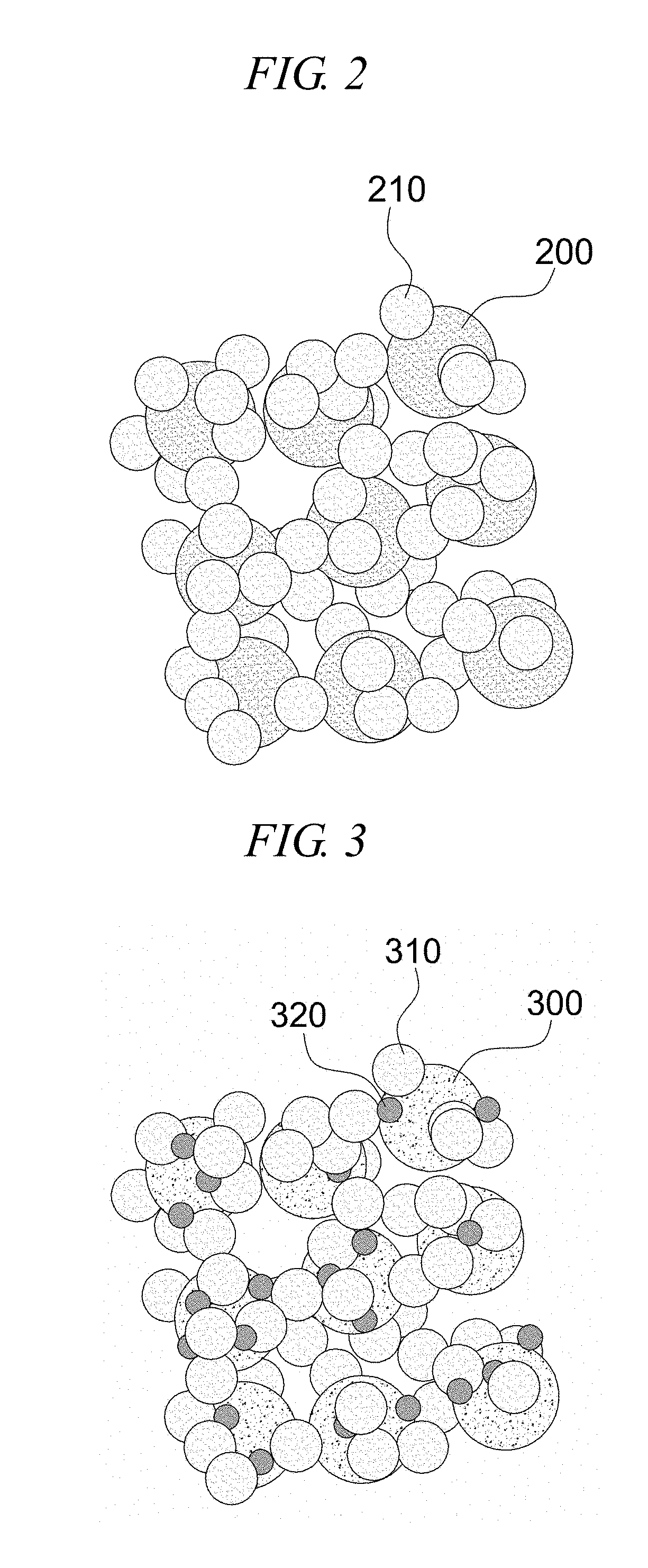Electrochemical catalyst structure and method of fabricating the same
a technology of electrochemical catalyst and catalyst structure, which is applied in the direction of cobalt compounds, chemistry apparatus and processes, cell components, etc., can solve the problems of reducing stability as a catalyst, unfavorable physical properties, and unexpected point defects, and achieves high stability and high performance.
- Summary
- Abstract
- Description
- Claims
- Application Information
AI Technical Summary
Benefits of technology
Problems solved by technology
Method used
Image
Examples
example 1
[0068]Example 1 is an embodiment of a plate-shaped electrochemical catalyst structure composed of a catalyst layer, a modifying layer and an electrolyte layer. A lanthanum strontium manganese oxide (La0.8Sr0.2MnO3, LSM) is used as the catalyst layer, a scandia-stabilized zirconia is used as the ion-conductive modifying layer, and a yttria-stabilized zirconia is used as the electrolyte layer to form an electrochemical catalyst structure. The oxygen reduction catalysis of the LSM catalyst without the modifying layer or the modifying particles is compared with the electrochemical catalyst structure according to the present invention.
[0069]FIGS. 4a-4f are reference drawing for comparison between electrochemical catalyst structures. FIGS. 4a and 4b illustrate a catalyst structure in which there is no modifying layer and only a catalyst layer 400 and an electrolyte layer 402 are present. FIGS. 4c and 4d illustrate a catalyst structure according to the present invention in which a modifyin...
example 2
[0076]Example 2 is an embodiment of an electrochemical catalyst structure of a core-shell secondary particle structure composed of catalyst particles, modifying particles and / or electrolyte particles. A lanthanum strontium manganese oxide is used as catalyst particles, a scandia stabilized zirconia is used as modifying particles, and a yttria-stabilized zirconia is used as electrolyte particles to form an electrochemical catalyst structure.
[0077]FIGS. 10a to 10c are reference drawings of another embodiment for comparison between electrochemical catalyst structures, FIG. 10a illustrates a catalyst structure composed of catalyst particles and electrolyte particles of yttria-stabilized zirconia, and FIG. 10b illustrates a catalyst structure composed of catalyst particles and ion-conductive modifying particles of scandia-stabilized zirconia, and FIG. 10c illustrates a catalyst structure composed of catalyst particles and more-conductive electrolyte particles of samarium doped ceria. Ref...
example 3
[0080]Example 3 is an embodiment of an electrochemical catalyst structure with an ion non-conductive modifying layer and a porous oxygen scaffold deposited on an electrolyte layer by an infiltration technique using a metal precursor solution. A lanthanum strontium manganese oxide is used as catalyst particles, a scandium oxide (Sc2O3) is used as an ion non-conductive modifying layer, and a yttria-stabilized zirconia is used as a porous scaffold and electrolyte layer to form an electrochemical catalyst structure.
[0081]The porous oxide scaffold is employed to provide an oxygen-ion conduction pathway throughout the structure by a screen-printing method using yttria-stabilized zirconia particles on a yttria-stabilized zirconia electrolyte layer. Subsequently, a metal precursor solution of dissolved scandium nitrate in ethanol is infiltrated onto the porous scaffold to form a scandium oxide modifying layer. The precursor solution is dropped on the porous scaffold and sintered at 950° C. ...
PUM
 Login to View More
Login to View More Abstract
Description
Claims
Application Information
 Login to View More
Login to View More - R&D
- Intellectual Property
- Life Sciences
- Materials
- Tech Scout
- Unparalleled Data Quality
- Higher Quality Content
- 60% Fewer Hallucinations
Browse by: Latest US Patents, China's latest patents, Technical Efficacy Thesaurus, Application Domain, Technology Topic, Popular Technical Reports.
© 2025 PatSnap. All rights reserved.Legal|Privacy policy|Modern Slavery Act Transparency Statement|Sitemap|About US| Contact US: help@patsnap.com



